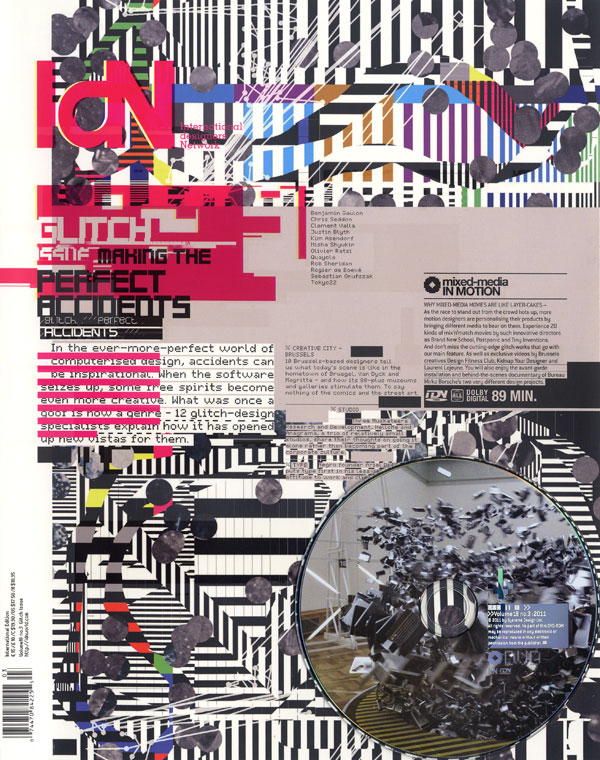Cypherpunks mailing list archive (1992-1998)
Filed under mailing list | Tags: · anarchism, capitalism, code, computing, cryptography, cypherpunk, free software, mathematics, politics, privacy, reputation, security, software
Cypherpunks was an active list with technical discussion ranging over mathematics, cryptography, and computer science. It had extensive discussions of the public policy issues related to cryptography and on the politics and philosophy of concepts such as anonymity, pseudonyms, reputation, and privacy.
The list was started in 1992, and at its peak in 1997 had well over a thousand subscribers, including John Gilmore (EFF co-founder), Timothy May (author of Crypto Anarchist Manifesto), Eric Hughes (A Cypherpunk’s Manifesto), Phil Zimmermann (PGP), Hal Finney (RPOW), Bram Cohen (BitTorrent), Adam Back (Hashcash), Julian Assange (WikiLeaks), John Young (Cryptome), or Rop Gonggrijp (Xs4all).
ZIP (from Cryptome.org)
Comment (0)IdN v18n3: Glitch Issue — Making the Perfect Accidents (2011)
Filed under magazine | Tags: · code, design, glitch, graphic design, software, typography

It started out as a software malfunction – now it is a design genre. Instead of holding their hands up in horror and crying: “Oh, oh, we have a glitch!”, the artists featured in this article say: “Whoopee! We have a glitch!” – and proceed to make the most of it.
The corruption of a binary code can produce some surprisingly attractive effects, so why turn your back on them? Here, 12 creatives from a range of design fields explain how they incorporate these happy accidents into their work – and we show you the remarkable results. It may change your mind forever about the meaning of the word “mistake”.
Featuring: Benjamin Gaulon | Chris Seddon | Clement Valla | Justin Blyth | Kim Asendorf | Misha Shyukin | Olivier Ratsi | Quayola | Rob Sheridan | Rogier de Boevé | Sebastian Onufszak | Tokyo22
section of the magazine, July 2011
30 of 108 pages
Steven Levy: In the Plex: How Google Thinks, Works, and Shapes Our Lives (2011)
Filed under book | Tags: · advertising, code, facebook, google, internet, microsoft, search, software, youtube

Few companies in history have ever been as successful and as admired as Google, the company that has transformed the Internet and become an indispensable part of our lives. How has Google done it? Veteran technology reporter Steven Levy was granted unprecedented access to the company, and in this revelatory book he takes readers inside Google headquarters—the Googleplex—to show how Google works.
While they were still students at Stanford, Google cofounders Larry Page and Sergey Brin revolutionized Internet search. They followed this brilliant innovation with another, as two of Google’s earliest employees found a way to do what no one else had: make billions of dollars from Internet advertising. With this cash cow (until Google’s IPO nobody other than Google management had any idea how lucrative the company’s ad business was), Google was able to expand dramatically and take on other transformative projects: more efficient data centers, open-source cell phones, free Internet video (YouTube), cloud computing, digitizing books, and much more.
The key to Google’s success in all these businesses, Levy reveals, is its engineering mind-set and adoption of such Internet values as speed, openness, experimentation, and risk taking. After its unapologetically elitist approach to hiring, Google pampers its engineers—free food and dry cleaning, on-site doctors and masseuses—and gives them all the resources they need to succeed. Even today, with a workforce of more than 23,000, Larry Page signs off on every hire.
But has Google lost its innovative edge? It stumbled badly in China—Levy discloses what went wrong and how Brin disagreed with his peers on the China strategy—and now with its newest initiative, social networking, Google is chasing a successful competitor for the first time. Some employees are leaving the company for smaller, nimbler start-ups. Can the company that famously decided not to be evil still compete?
Publisher Simon and Schuster, 2011
ISBN 1416596585, 9781416596585
352 pages
video (NPR interview with Laura Sydell)
review (Evgeny Morozov, The New Republic)
review (Siva Vaidhyanathan, The Washington Post)
review (Paul Boutin, The Wall Street Journal)
review (Jack Shafer, San Francisco Chronicle)

